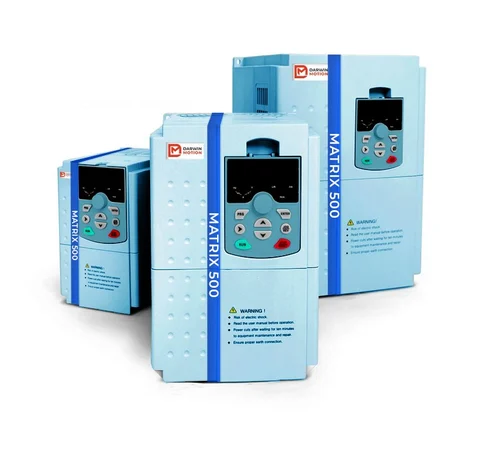Posted on 20th Feb 2024

According to Darwin Motion VFD & Servo Drive Manufacturer, In the realm of industrial automation, Variable Frequency Drive (VFD) panels stand as silent yet powerful guardians, orchestrating the seamless control and optimization of electrical systems with precision and efficiency. These sophisticated panels represent the culmination of cutting-edge technology and engineering prowess, revolutionizing the way industries manage and harness electrical power.
At their core, VFD panels serve as command centers for controlling the speed and torque of electric motors by varying the frequency and voltage of the electrical power supplied to them. This dynamic control enables precise regulation of motor speed, resulting in optimized energy consumption, enhanced operational efficiency, and extended equipment lifespan.
VFD panels typically consist of several key components, each playing a vital role in the overall functionality and performance of the system:
Variable Frequency Drives (VFDs): The heart of the panel, VFDs also known as ac drive convert incoming AC power into DC power before using pulse-width modulation (PWM) techniques to generate variable-frequency AC power. This allows for seamless speed control of connected motors, reducing energy consumption and wear-and-tear.
Control Interface: VFD panels feature user-friendly control interfaces, such as touchscreens or control panels, which allow operators to monitor and adjust various parameters, including motor speed, direction, and operating modes.
Protection Devices: To safeguard against electrical faults and overloads, VFD panels incorporate a range of protective devices, such as circuit breakers, fuses, and overload relays. These devices help prevent damage to equipment and ensure safe operation in diverse industrial environments.
Communication Interfaces: Many VFD panels are equipped with communication interfaces, such as Ethernet, Modbus, or Profibus, enabling seamless integration with supervisory control and data acquisition (SCADA) systems, programmable logic controllers (PLCs), and other industrial automation devices.
Enclosures and Cooling Systems: Enclosures play a crucial role in protecting VFD panels from environmental hazards, such as dust, moisture, and temperature fluctuations. Additionally, cooling systems, such as fans or heat sinks, help dissipate excess heat generated during operation, ensuring optimal performance and reliability.
VFD panels find widespread applications across various industries, including:
Manufacturing: In manufacturing facilities, VFD panels regulate the speed of motors powering conveyor belts, pumps, fans, and other machinery, allowing for precise control of production processes and reducing energy costs.
HVAC Systems: VFD panels play a critical role in heating, ventilation, and air conditioning (HVAC) systems by modulating the speed of compressors, blowers, and pumps based on changing load conditions, improving energy efficiency and comfort levels.
Water and Wastewater Treatment: VFD panels help optimize the performance of pumps and blowers in water and wastewater treatment plants, ensuring efficient operation while minimizing energy consumption and maintenance requirements.
Renewable Energy: In renewable energy systems, such as wind turbines and solar power plants, VFD panels regulate the speed of generators and inverters, maximizing energy output and grid stability while minimizing wear-and-tear on equipment.
According to Darwin Motion Variable Frequency Drive Manufacturers, VFD panels represent a cornerstone technology in the realm of industrial automation, offering unparalleled control, efficiency, and reliability in managing electrical systems. From manufacturing and HVAC to water treatment and renewable energy, these sophisticated panels play a crucial role in driving operational excellence, energy savings, and sustainability across diverse industries. As the demand for energy-efficient and environmentally friendly solutions continues to rise, VFD panels stand poised to lead the way towards a smarter and more sustainable future.